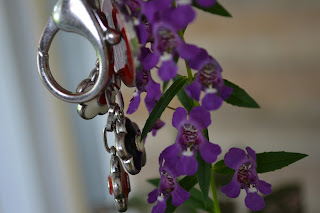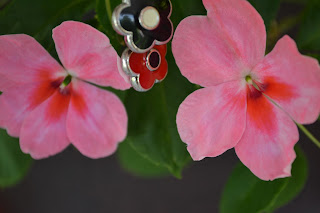Monday, 6 August 2012
Emily Knight
radial symmetry: the arrangement in which the body parts in an organism is located around a central axis.
This shows a picture that I took while on vacation in Jamaica of a sea urchin. While we were at that beach, we found five or six of them in the shallow water. Sea urchins are an example of an animal with radial symmetry because if you would cut the body in half, both sides would be identical and equal.
lipids used for energy storage: Lipids are naturally occurring compounds that are not soluble in water. They supply organisms with energy.
This shows butter which is an example of a lipid that is used for energy storage.
sporophyte: an individual diploid organism that undergoes asexual reproduction to make spores.
This shows a tree in my neighbors yard that is an example of a sporophyte in a plant.
population: a group of the same organisms that are interbred and live in the same place at the same time.
This shows a dead crow (my dad killed it and hung it in our garden to keep the other crows from eating our corn). Crows are an example of a population because they live in the same place and they are interbred.
gymnosperm leaf: Gymnosperms are vascular plants whose seeds are not enclosed by a ripen ovary.
This shows the leaf of a gymnosperm that I found in my neighbors yard.
gymnosperm cone: Gymnosperms are vascular plants whose seeds are not enclosed by a ripen ovary.
This shows a gymnosperm cone that I found in my neighbors yard.
vestigial structure: an organ that has been passed down through generations of that organism but is no longer is functional.
This shows a dandelion which is an example of a vestigial structure. Dandelions have organs that are used during sexual reproduction, but they are no longer used because dandelions reproduce asexually.
bilateral symmetry: organism which when divided each half is a mirror of the other.
This shows a leaf that is an example of bilateral symmetry because when it is folded in half, each side is identical to the other.
Krebs cycle: series of complex chemical reactions in cells that utilizes oxygen to help the respiration process.
This shows a flower that is a eukaryote. Since the flower is a eukaryote, the Krebs cycle is performed in the mitochondria.
endosperm: the tissue that is found inside of the seeds of most flowering plants.
This shows coconut water that I drink during soccer season to keep hydrated. Coconut water is an example of liquid endosperm.
genetic variation within a species: genetic diversity within a population that results in a new gene combination.
This shows filler plants that I found in a flower pot around my house. These are an example of genetic variation within a species because as you can see, they have the same structure, but they are different colors.
asexual reproduction: the form of repruduction where single celled organisms have offsprings from a single parent.
This shows a strawberry that reproduces asexually.
ATP: used for energy storage by plants.
This shows a flower that uses ATP. In this flower the ATP occurs in the mitochondria and in the chloroplasts.
autotroph: organisms capable of making nutritive organic molecules from inorganic sources.
This shows a flower which is an example of an autotroph.
xylem: vascular tissue that transports water and nutrients from roots to shoots and leaves.
This shows tree roots where xylem transports water and nutrients.
Subscribe to:
Post Comments (Atom)















Good examples! Sea urchins are incredibly interesting specimen used in research! They lay a ton of eggs and are re-productively successful! I liked your coconut water/endosperm example.
ReplyDeleteEmily, I have recorded that you have turned in 50 images for the biology collection. You have earned your 100 points. Thanks! Enjoy the rest of your summer!!
ReplyDeleteOkay. Thank you! I hope you enjoy the rest of your summer as well!
Delete